Issue Number 24, Spring 2014
Contents
- They Feed They Lion by Philip Levine
- Abbreviated Geography by Paal-Helge Haugen
Translated from the Norwegian by Damon Aukema - Arribada: Arrival of Olive Ridley Sea Turtles by Maya Khosla
- Dragonfly, Shelling by Clara Quinlan
- Eleven Daffodils by Meryl Natchez
- Extinct: Laughing Owl
Sceloglaux albifacies by Holly J. Hughes - Giant Pandas by Daniel MacIsaac
- Leave Taking by Gail Rudd Entrekin
- Letters from the Hinterland #8, Toxins by Raymond Greiner
- Musings from the Silence at the Vedanta Retreat in Olema, California.
What's a Weed? by Carolyn North - North Woods by Monty Jones
- Promethea Moth by Margot Farrington
- Seeing, Choices by Sarah Fawn Montgomery
- The Blessing by Michael Hettich
- The Day After the Storm by Amber Foster
- The Extinction Stories: Orange Band, The Last Dusky Seaside Sparrow by Daniel Hudon
- The Gold Tongue by Barbara Daniels
- The Potteries by Patti Capel Swartz
- Vigil for the Leatherback by Paul Belz
- Winged Victory by Wendy Williams
Archives: by Issue | by Author Name
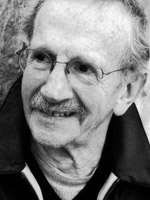
They Feed They Lion
by Philip Levine
Philip now divides his time each year between the San Juaquin River valley on the West Coast and the Hudson River watershed on the East Coast.

Out of burlap sacks, out of bearing butter,
Out of black bean and wet slate bread,
Out of the acids of rage, the candor of tar,
Out of creosote, gasoline, drive shafts, wooden dollies,
They Lion grow.
Out of the gray hills
Of industrial barns, out of rain, out of bus ride,
West Virginia to Kiss My Ass, out of buried aunties,
Mothers hardening like pounded stumps, out of stumps,
Out of the bones' need to sharpen and the muscles' to stretch,
They Lion grow.
Earth is eating trees, fence posts,
Gutted cars, earth is calling in her little ones,
"Come home, Come home!" From pig balls,
From the ferocity of pig driven to holiness,
From the furred ear and the full jowl come
The repose of the hung belly, from the purpose
They Lion grow.
From the sweet glues of the trotters
Come the sweet kinks of the fist, from the full flower
Of the hams the thorax of caves,
From "Bow Down" come "Rise Up,"
Come they Lion from the reeds of shovels,
The grained arm that pulls the hands,
They Lion grow.
From my five arms and all my hands,
From all my white sins forgiven, they feed,
From my car passing under the stars,
They Lion, from my children inherit,
From the oak turned to a wall, they Lion,
From they sack and they belly opened
And all that was hidden burning on the oil-stained earth
They feed they Lion and he comes.
© Philip Levine
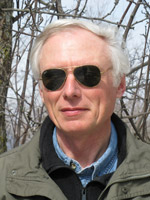
Abbreviated Geography
by Paal-Helge Haugen
Translated from the Norwegian by Damon Aukema
Paal-Helge is a Norwegian poet, novelist and playright.
Damon lives in Red Wing, Minnesota, in the Rush-Vermillion watershed and within walking distance of the Mississippi River.

Forests grow up
from the map, first as a thin film
of green earth with distant footsteps
and cries, rivers overflow their banks
and soak the paper, the wind sweeps in
and out between its pages, with wingstrokes
and rippling when sun and rain rewrite everything
again as the sand spreads, sifting
down over continents, and on the sixth day
a barely visible streak
of smoke, day of fire and ashes
before the seventh day, when the forests stand
gray and defoliated, ready to judge
the living and the dead.
© Paal-Helge Haugen
Translated from the Norwegian by Damon Aukema

Arribada: Arrival of Olive Ridley Sea Turtles
by Maya Khosla
Maya lives near Copeland Creek, which is a part of the Russian River watershed in Sonoma County.

Because desire and perfection are tangled forever in darkness,
those who emerge are offspring of an edge
whose salts and sighs echo the waves.
The night rising and sinking under phosphorescence
churned into being
with each wave’s crash and sizzle. A map of cold
green light from which mystery
must surface to breathe, must swell
to the shape of a thousand strangers,
a thousand more. All clothed in submarine suitcases
heaped with expectation.
No choice but to sink to your knees in sand
terrified that life, laden with all her pearls of tomorrow,
could lose her lumbering grip on the world.
And though the turtles cannot afford
to care about perils, evolution does.
And so has created this mad saturation—
so great you could walk miles on their shells
and never touch sand.
Such is persistence. It has no choice but itself,
older than the Jurassic moment
when females began this flipper-footed scraping,
this egg-laying labor, eyes gazing seaward
vertical eyelids opening, shutting, opening
full of tear-gel.
© Maya Khosla
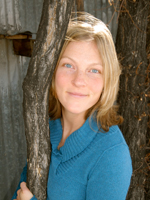
Dragonfly, Shelling
by Clara Quinlan
Clara lives in the Front Range of the Rocky Mountains, where Longs Peak looms in the near distance and Coal Creek cuts dramatically across the land.

How silver clings to the dawn the rain
Stammering, its threaded wings
under the wind see we all hold on
with our many arms iridescent
larvae curled against the underbelly of pier,
magenta sheen, flecks of blue,
tiniest instance of
something I might walk toward
were I lost, were this water
across the anviled world to carry me
no longer
Its chitin shell with shape with eyes
emergent as it could be again in this stirring –
harmony soft of scraping leaves
soon dripping, sound
to be numbered and the tattered shore
radiant with the born
Come closer
as if this eased the possession
deliver yourself hapless
each falls into the lapping but for the one
in your palm, taut-winged, transmuting the light.
© Clara Quinlan
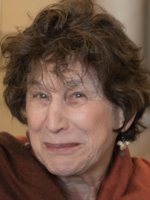
Eleven Daffodils
by Meryl Natchez
Meryl lives overlooking coast live oaks that line the canyon of Cerrito Creek as it flows into the San Francisco Bay.

What am I to make of these daffodils,
perfumed strumpets
picked who knows where
by who knows whom
perhaps genetically modified,
commercially fertilized,
doused with pesticide?
These questions did not arise
when I tossed the budded stems
into my shopping cart
on a chill afternoon:
essence of Spring
for a dollar twenty-nine.
Now they sit
and pump out scent,
molecules of daffodil
mixing with molecules of oxygen
around my desk
until I am dizzy
with praise
and regret.
© Meryl Natchez
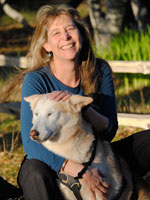
Extinct: Laughing Owl
Sceloglaux albifacies
by Holly J. Hughes
Holly is happy to have landed in the Chimacum River watershed at the foot of the Olympic Mountains on the Olympic Peninsula in Washington. For the last 30 years, she has spent part of each summer working on boats in the waters of the Alexander Archipelago of Southeast Alaska.

A hundred years ago, on dark nights, their laughter
echoed over the green fells of New Zealand.
The settlers say the haunting notes of their laughter
--they called to each other -- came minutes before rain.
Languid during the day, the white-faced owls
were too easy to capture. They fed on a native rat,
the kiore, whose extinction brought on their own.
In 1905, a settler told how a laughing owl could
always be brought from its hiding place in the rocks
after dusk by the squeeze and wheeze of an accordion.
He told how the owl would silently fly over, face
the music, listen until the music ceased.
Inspired by Swift as a Shadow: Extinct & Endangered Animals by Rosamond Purcell.
© Holly J. Hughes
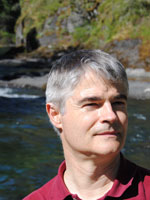
Giant Pandas
by Daniel MacIsaac
Dan lives and writes in a home overlooking Witty's Lagoon on Vancouver Island.

Ailuropolda melanoleuca
These are contrary creatures,
carnivores evolved to live on shoots,
bearcats that the Ming Chinese
believed ate copper cooking pots.
Bulky as beer kegs,
they must slip each hemp-line snare
then dodge each hunter’s blind,
becoming addled blurs
to the snakehead’s eye.
Jailbirds, blackpatched
lifers hostage
to the flowering
of bamboo,
under house arrest
they pace, tagged
and monitored,
kept to high ground
by slash and burn.
Tinged snowdrift
and deep treeshade,
they just blend in,
knowing their place.
Shy cousins
to burly cave bears
they slink through Time,
discrete and buttoned-down
as butlers.
© Daniel MacIsaac
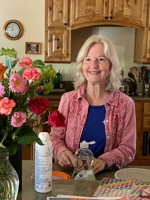
Leave Taking
by Gail Rudd Entrekin
Gail lives amid the Coastal Range east of San Francisco Bay in the San Pablo Bay watershed just above San Pablo Creek on lands of the Chocheno and Karkin Ohlone people.

Everywhere the planet
is pulling in her generous green
folding it up forever in the vast trunk
of history. She is taking down the curtains
of rain and giving them away to someone
in another dimension who will treat
them gently. She is rolling up
the atmosphere with its cigarette holes
and moth-eaten diatribes and when
she has packed her bags and slammed
the door and left us looking at each other
in silent shame, like bad children,
we will say, We didn’t do it.
It was someone else.
© Gail Rudd Entrekin
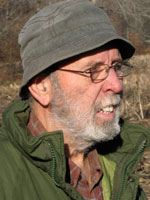
Letters from the Hinterland #8, Toxins
by Raymond Greiner
Raymond lives with his canine companions Orion and Venus on 14 acres of remote forested and pasture land about three miles from the hamlet of Paragon, Indiana, in a cabin about 500 yards from the little-traveled road.

The nightly radio show “Coast-to-Coast AM” spent an entire program interviewing experts and discussing a profoundly important and interesting issue, the modern agricultural practice of using chemical fertilizers, herbicides and pesticides. Decisions to advance this technology were made solely from a perspective of economics: higher yield, faster field management, less cost to cultivate, more dollar return relating to time and equipment operating costs. Long-term effects were not considered. Profiteering has found a home in modern, large-scale agriculture. Economics has trumped logic, which forms a destructive, controlling force, oblivious of consequences.
Honeybees are dying off rapidly because they ingest toxins that attack their nervous systems from the chemicals used in modern-day farming practices. Beekeepers are losing in excess of 20 percent of their bees annually as a result. Honeybees are important far beyond the manufacturing of honey. Bees are vital to pollinate crops and wild plants. Weeds mutate, building a resistance to the chemicals and causing the chemical companies to increase the toxicity levels of the chemicals in order to counter the weeds’ mutations. Because honeybees are farmed, the noticeable decline in their numbers is more evident and alarming. However, there are many more species of pollinators that are likely suffering decline on a level similar, or even greater than the honeybees’. Orchard bees, bumblebees, syrphid flies, pollen wasps and hummingbirds don’t get a head count, because they don’t manufacture honey and do not contribute to economics in a directly impacting manner.
Where I live, each spring I see farmers pulling trailers with large tanks of chemicals to be sprayed on their fields. As these chemicals are sprayed year after year, the soil becomes contaminated and the toxins are absorbed into the crops, which are ingested by humans. This system is solidly in place with no sign of change or discussion by those capable of implementing change. Monsanto heads a powerful lobby group whose goal is to block legislation that can address the issues of chemical poisoning of the soil and thereby the populous. Money and profits are addictive elements of power and influences capable of destructive patterns. The question is: Are the farmers’ bank accounts and the corporate bottom line more important than human health and well being? Our food chain is being tampered with and little or no consideration is applied regarding long-term effects.
How can ecosystems flourish without pollinators? Organic farms adjacent to chemically dependent farms are influenced by the destruction of the bees. Bees were kept for their value as pollinators as far back as ancient Egypt and now are being threatened by a quest for wealth. Without pollinators we will experience devastation equal to any in human history. Technology is here to stay, but it is ever increasingly important that we learn where the boundaries are located separating benefit from ruin.
© Raymond Greiner
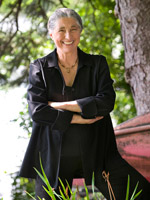
Musings from the Silence at the Vedanta Retreat in Olema, California.
What's a Weed?
by Carolyn North
Carolyn lives between the Derby and Temescal watersheds on the east side of San Francisco Bay.

The word “weed” generally refers to a plant not valued for use or beauty, that grows wild and rank and hinders the growth of superior vegetation. One dictionary defines weed as an “unprofitable, troublesome, or noxious growth, a plant considered to be a nuisance. The word commonly is applied to unwanted plants in human-controlled settings or any plants that grow and reproduce aggressively and invasively.” In other words, a plant smart enough to know how to survive no matter what, that takes advantage of whatever the world offers it to live.
I’ve been weeding in the Vedanta garden, often wondering what to pull and what to keep. The roses and azaleas I know are keepers, and the iris, just past, and the lavender bushes. The intruding grasses have got to go, but just a few yards away in the meadow they are native, at home, welcome. Poppies as well, although once they invade the cultivated beds they make themselves quite at home because, well, they are at home. This is their turf, as it is for plantain and clover, mullein and dandelion. I grab a handful of bindweed, amazed by its tenacity and the range of its roots, and I find myself mentally apologizing to it when I toss it onto the dead pile.
I want to applaud all these weeds for their cleverness in snuggling up close to the cultivars, the “superior vegetation” that receives regular watering, where they can, for awhile at least, mask themselves and drink their fill. At least until some human with an attitude – like me, for example – comes along and yanks them out.
It’s true, though, that the stunning show of the exotics’ white and bright red, deep purple and orange against the greens of the garden shows the glory of flowers more vividly than the subtle shades of the dry dirt natives, but who is likely to survive when the water and the weeders run out? Given a season or two of non-interference, which plants are likely to still be here, providing medicine for the soil and whatever humans are still around, and which plants will have dropped their leaves in a last, sad hurrah? (Plaintain: skin abrasions, laxative. Clover: antispasmodic, anticoagulent, diuretic. Mullein: sedative, anti-inflammatory. Dandelion: liver tonic, diuretic...)
So who decides what gets to stay and what must go, and by what criteria do we/they make our call? The big-time weeders cut down whole forests and shoot wolves from helicopters. Bears are almost gone and puffins have gone extinct. The local cops even shot a coyote who wandered into my town one night, probably disoriented, and I’m told that once eagles flew in these skies. Maybe we are the weeds, the noxious intruders who have reproduced aggressively and invasively, hindering the growth of a superior and diverse community?
Personally, I consider us humans rather gorgeous and remarkable additions to the world scene, but still in an infantile stage that doesn’t yet know when it’s OK to interfere with the natural order and when it’s simply stupid to do so. What ignorance about how it all goes together – or even that it all goes together! What will it take for us to learn to keep our hands to ourselves and our eyes and ears humbly open?
Balance. It’s all about keeping in balance with the world and the others here with us, becoming neither weeds nor weed pullers, but equal members of the whole enchilada, benefiting and being benefited in turn. What made us ever think otherwise?
© Carolyn North
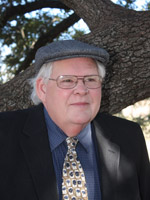
North Woods
by Monty Jones
Monty lives within the highly urbanized Country Club Creek watershed in Austin, Texas. Country Club Creek is only seven miles long and flows into the Colorado River not far from Jones' house.

Chanced upon this one place no one else
wanted, camped among these red pines
beside the least-favored lake, for three cold nights
I have bent before a fire, scavenged branches
urged into flame, tired of finding things I can’t name
everywhere I look, to watch the blue light go down
and wait for the flight of the loon.
This one bird, a male, and the same one
I have seen in the full light far out across the lake,
where he drifts and rocks at a lazy distance
from the female and the two young,
so they are together and apart,
until somehow toward dusk he has been off alone,
far to the north, and begins his long return to them:
First and for a long time you only hear him calling,
a parody of the proper sound of a bird,
his cartoon laugh and then that long lunatic cry
until a loon appears above you, flying so low
above you and so fast, you hear his wings
thrash the air, until he disappears in the pines
and then flies on and on into the growing darkness.
Each night the loon makes the same mad dash home,
a thing to stand and wonder at – to hear him coming
all that time, announcing the fact of himself
from that great distance, and then at last
to see the staggering addle-winged flight
as he crosses above me where the branches part
in the darkening sky, and to think of how
he must sound to the ones across the water.
© Monty Jones
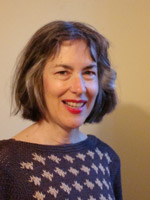
Promethea Moth
by Margot Farrington
Margot lives in Williamsburg, Brooklyn, two blocks from the tidal sweep of the East River--a major flyway for migratory birds.

On her wings she wore eyes of surprise, and was herself
an optic confection, for the hand of the moth god had
sugared her scant but sprinkled cinnamon without stint.
Caught, she beat like a book, pages flipped by wind.
No spider rushed to where she spun, tethered by gobbet
and thread. She’d snuff by exhaustion, dancing the
twirl-to-tatters waltz, fastened
trickily by one forewing so
how to loose but not to tear her?
Painter’s wife, I chose a brush
as from the Nether-Wherever,
Turner and Constable watched my strokes. Marin
pursed his mouth as I worked further under her
wing. When she dropped in the little bucket
cleaned for this maneuver, Kline and De Kooning
grinned. You secured the plastic lid, then handed
me her prison. Attuned, I registered no flutter,
yet each step felt seismic.
The bark good for camouflage, only a cherry tree
would do. Not this tree, I said, not that one,
as we crossed the lane, the downed fence. Did I say she
was big as a child’s hand, that our night light
drew her? Did I mention how she began as it,
strove awhile as he, how somewhere in the struggle he
morphed to emerge as she? Our theory of her sex
determined solely by the drama.
She clung a minute to the tree we chose.
Closed. Opened, throbbing slow. She flared,
flew us to field’s edge, and then she let us go.
Reprinted from Scanning For Tiger, (Free Scholar Press, 2014).
© Margot Farrington
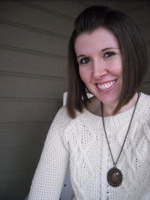
Seeing, Choices
by Sarah Fawn Montgomery
Sarah lives on the Great Plains in Lincoln, Nebraska.

Choices must be
simpler for starfish,
who don’t see
the world
like you or me,
colors and shapes,
texture, movement,
each decision
influenced
by how images
conjure the histories
lurking somewhere
in our brains,
the way these shade
what we see, do.
No capacity
for memory, legacy,
starfish know only
light and dark,
eyespots tipping
each slender leg,
stretching out
pentagram
to glimpse
the wide world
only slightly,
choice merely
between shimmer
or shadow.
© Sarah Fawn Montgomery
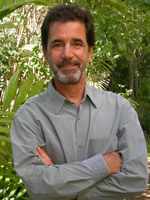
The Blessing
by Michael Hettich
Michael lives on the Atlantic Coastal Ridge in the Biscayne Bay Watershed of South Florida, a mile west of Biscayne Bay.

Just to think of the much-loved pet dog lost
beside some strange highway, feeling he needs to
get across somehow; just to think of the raccoon
leading her kits up the turnpike ramp,
or the thousands of squirrels and pigeons flattened
like shadows. Think of us humans with somewhere
to go, moving quickly. And whose dog is that
lapping at the garbage in the alley, you know,
the one with a badly-healed leg that festers
with stink, who leaps away yelping when the father
walking along with his child, pretends
to kick the lame dog to make his child laugh
and teach him what’s funny. The dogs that so proudly
cross the rush-hour street as though
they were going somewhere, the opossums who shuffle
along our sidewalk in the moonlight with their babies
all safe in their pouches; we could think of them blessing
our sleep by passing, just think of them dreaming
all day while we work—they all dream, of course,
like we do, to process their lives, just as
they all had parents who grappled to make them,
and mothers who suckled and groomed them, each one.
© Michael Hettich
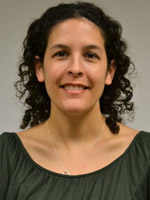
The Day After the Storm
by Amber Foster
Amber lives in the Brazos Valley region of Texas, along the green banks of Brazos River, the 11th-longest river in the world.

The barracuda stares at me with deep sea eyes.
You don’t belong here, those eyes say. What kind of fish are you?
At a hundred feet, we are enveloped in blue. There is no bottom, although it should be here, along with the wreck we have come to dive. The only sense of up and down comes from the bubbles of exhaled breath that mushroom up and away, expanding as they carve their way to the surface.
I’m lost.
Behind me, my two customers wait, pointing at the barracuda, their eyes wide behind their masks. It is not the wreck they have come to see, but it is something. They are a nice couple, Canadian, mid-twenties. I have spoken with them only briefly, long enough to tell them how deep, how long, what not to touch.
The barracuda is the largest I’ve encountered. Six feet, although maybe only five on the surface, without the perspective-tricks the sea plays. His teeth are large and sharp, designed to crack the bones of littler fish. He stares at me with grandfather eyes, his long, silver body crisscrossed with the scars of old battles.
Do you know where it is? I ask him with my eyes.
The boat captain took us along the rocky, wave-eaten coast for twenty minutes, and then turned off the motor. A plane of flat water, identical on all sides. Where’s the buoy? I asked, and the man shrugged, leaning back and pulling his hat down over his face.
I’m not supposed to ask questions. I’m a freelancer, a drifter. No one knows I have only been on the island a week and don’t know the way. With buoys, there are ways around not knowing, ways of plotting easy out-and-back courses until the labyrinths of coral become familiar.
But the storm came in the night, and sank the buoy and the line leading down to the wreck.
Without the buoy, I’m lost.
The barracuda swims closer, so close I can see the inside of his mouth, white like desert bones. I’m not afraid. He’s curious about these strange fish in his sea, fish whose bubbles fill the world with noise. In an instant he turns, and displaced water brushes my face, feather-like. I follow, pressing hard with my fins, trying to catch up, even though I know it is impossible. I wave for the customers to follow. In my peripheral vision I catch glimpses of bubbles, black wetsuits, pale knees bobbing above cheap plastic fins.
Ahead, the barracuda fades from view, merging with a great shadow that rises up from the sea floor. The shadow becomes the wreck, a heap of discolored metal resting on its side in the sand. A rusting corpse coated with a living skin of coral. From under the cargo hold, the green moray they call El Capitán peers at me, as if asking me why I am so late. I turn and look for the barracuda, but he’s gone.
Thank you, I say, speaking with eyes that look past the wreck to where the sunlight disappears into points of refracted light. Nearby, a broken mast lies half-buried in the sand. The coral-encrusted metal is like an old man’s finger, pointing out and down.
© Amber Foster
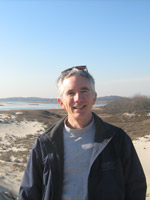
The Extinction Stories: Orange Band, The Last Dusky Seaside Sparrow
by Daniel Hudon
Daniel lives on the East Coast, not far from various nesting sites of the endangered piping plover in the Charles watershed.

In the jar, all is quiet. It can’t hear anything. No traffic, no mosquitoes, no rockets blasting off to the moon. The air is pure though sadly, the wind never blows. The marsh is long gone. Its blind eye lies open, unseeing in its green glossiness. Its head is pressed against the bottom of the jar, yellow beak closed, mottled feathers tussled. Just an ounce of bird, the few notes of its song unsung. A tag on its claw reads:
Dusky "Orange"
Last one
Died 18 Jun 87
© Daniel Hudon
The Gold Tongue
by Barbara Daniels
Barbara Daniels lives in the Big Timber Creek watershed, which drains into the Delaware River.

She wants to let the world
be the world, patient accumulation
of leaves, beautiful wheel of the sky,
slabs of rock an open book of mercy.
What she desires-gold tongue
of a purple iris, sweet light in trees.
A hawk turns, lifts its ragged wings.
She is her body, these lips, this hand.
Pink shrubs border the river.
Blossoms fill branches. Leaves
and grasses do not lack tenderness.
She sees that they never stop rippling.
© Barbara Daniels
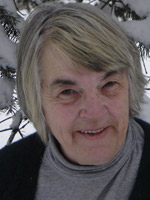
The Potteries
by Patti Capel Swartz
Patti grew up and currently lives in the watershed of the Middle Fork of Little Beaver Creek Wild and Scenic River, a part of the watershed of the Ohio River. Her office overlooks the Ohio between Southern Ohio and the Northern Panhandle of West Virginia.

The Brownfields Law defines a "brownfield site" as:
...real property, the expansion, redevelopment, or reuse of which may be complicated by the presence or potential presence of a hazardous substance,pollutant, or contaminant." Brownfield sites include all "real property," including residential as well as commercial and industrial properties.
In the potteries’ heyday when East Liverpool, Ohio, was called the pottery capital of the world, women licked tiny paintbrushes to apply gold leaf to china, and glazes were bright from the lead. When pottery was misshapen or broken, shards were dumped in lots the potteries owned or on the riverbank leading to the Ohio River. Silicon filled the air, dust from the clay. Workers swallowed lead, breathed silicon, smoke from the kilns.
Thirty years after TS&T pottery closed, the buildings sat, still, hulks, reminders of a past when whole families shaped clay, painted, fired. Some men carried clay on boards resting on their heads, some ran wheels. Others loaded kilns, turning their faces away from the heat. Children packed china in barrels: plates, cups, saucers, bowls immersed in straw. At the plant’s close, buildings sat idle, although families lived in what had been an office building, and low-income housing developments mushroomed next to the site.
Then buildings, half razed, weathered for six years, asbestos insulation, open to the rain, blowing in the wind. Two silos that held clay and a smokestack stand. The skeleton of the plant reduced to piles of yellow brick stands above foundations under foundations, rooms below ground, a labyrinth needing to be filled.
Shards of pottery still dot the riverbank. Water courses down the steep bank, carrying its burden of lead. Children, their parents, their grandparents, aunts and uncles, drink water from the river. Birth defects,
Intellectual disabilities, and, of course, cancers rate the area highest in health problems. Cancer here is endemic.
Brownfields beget brownfields. Other dirty industries locate here. There is no way to prove blame.
© Patti Capel Swartz
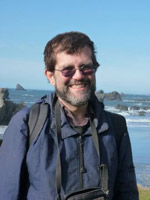
Vigil for the Leatherback
by Paul Belz
Paul lives near San Francisco Bay, a habitat that is also home to red tailed hawks, redwood trees, raccoons, California newts, and skunks.

It's the crickets' chant,
the syncopated calls of five species
and the howler monkeys' cries
that call you to shore while we wait,
sleepy in the parking lot with our cheeks
on our knees and ours eyes blurred.
You ride the currents, the rushing tides
and we yearn for you, we children
of beach front property, of fishing trawlers
and plastic bags. We yearn to see
that you still live, great vagabond. We yawn,
sleep on the sidewalks with our arms
wrapped around our bent legs until the herald
of your arrival comes. We walk in silence
past guardian waves. They chant with the crickets
and monkeys. The biologist's red votive light
guides us to your side, great traveler. We squat
and kneel on damp sand while you drop eggs
into their shelter. They are round as cue balls,
ivory white and damp, all sizes in a pile.
You struggle with the land, water reptile,
you wrestle with gravity and your weight.
The ridges on your brown - green shell
don't balance you here. We surround you
and watch through the red darkness. We're
silent and motionless as your flippers wave
and toss sand on the eggs as shelter from raccoons.
You start to turn to face the ocean. We break our circle,
rise and move to let you be. Did you notice us
in your struggles, we children of DDT and oil?
You swim in our chests as we walk
single file and silent past the guardian waves
beneath the Geminid meteors and Orion,
our guide to the sky,
while crickets chant and monkeys sing.
Playa Grande, Costa Rica 12/13/01
© Paul Belz
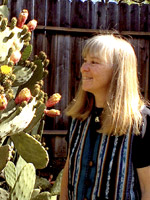
Winged Victory
by Wendy Williams
Wendy lives close to the American River in northern California about two miles from Lake Natoma. The pelicans in the poem were flying north over Salt Point on the Pacific coast.

(a tribute to Rachel Carson, author of the book Silent Spring (1962), which exposed the dangers of DDT, among them the weakening of pelican egg shells)
How glad you would be
to see this
long line
of pelicans
one behind the other
skimming the ocean
their shadows
black mirrors
beneath
pelicans
arrowing
across the sky
in a long loose V
a front of pelicans
galloping toward me
over the plain of sky
fifty fliers
pumping wings
muscling their weight
into wind
one bird
trailed by
three fledglings
flapping wildly
to keep up
string after string
of birds
whose eggs
now hold
hatching
into wings
of wild
© Wendy Williams